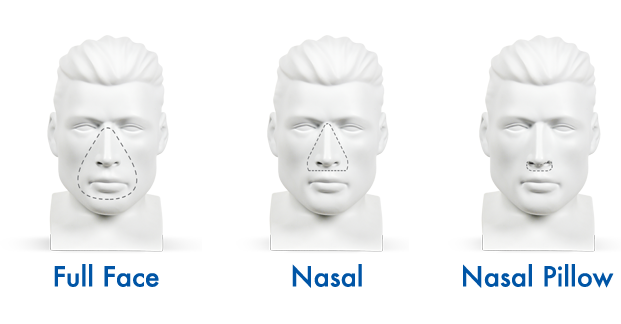You’d be surprised how many people with Sleep Apnea don’t even understand key Sleep Apnea terms, such as what CPAP actually stands for. C-what??? Exactly.
Don’t get caught up with words! CPAP rookies and veterans alike sometimes struggle with unfamiliar vocabulary associated with Sleep Apnea. Understanding key Sleep Apnea terms may make your sleep therapy less intimidating and more efficient in the end.
- AHI (Apnea Hypopnea Index): The number of apneas and hypopneas per hour. Or an index for Sleep Apnea. 5-20 mild, 21-50 moderate, above 50 severe.
- APAP/ Auto CPAP: APAP is an acronym for Automatic Positive Airway Pressure and is similar to a CPAP however instead of delivering one constant pressure set specifically for each individual patient, the APAP machines will automatically find just the amount of pressure needed to keep the airway open on a breath by breath basis.
- BiPAP/BiLevel/VPAP: These machines deliver two distinct pressures; one for inhalation and a lower pressure upon exhalation. This type of machine is most commonly used to treat severe Obstructive Sleep Apnea or Central Sleep Apnea.
- Central Sleep Apnea: A person stops breathing throughout the night, not due to a blocked air passage, but because the brain temporarily stops sending signals to the muscles that control breathing.
- CPAP: CPAP stands for Continuous Positive Airway Pressure and these machines blow a fixed amount of air pressure.
- CPAP Masks: These deliver positive flow of air from the CPAP machine into the air passages in order to keep the airway open.
- Full Face Mask: Triangular in shape, but seals around the nose in mouth. Great for users who breathe through their mouth or frequently suffer from allergies or congestion.
- Nasal Mask: Triangular in shape, but only seal around the nose. This mask is great for users who breathe through their nose.
- Nasal Pillow Mask: Seal at the base of users’ nostrils with a soft, flexible pillow. This mask works well for claustrophobic users because there are minimal contact points.
- Exhalation Relief: Exhalation relief is a comfort feature which reduces the air flow at the time of exhalation, making the breathing process more natural.
- Hypopnea: A respiratory episode where there is partial obstruction of the airway lasting greater than 10 seconds. Also called partial apnea or hypo-apnea.
- OSA (Obstructive Sleep Apnea): Obstructive Sleep Apnea is the most common form of Sleep Apnea and occurs when the muscles and tissues in the throat and air passage relax while sleeping, and this impedes the flow of air into the lungs due to a blockage of the airway.
- Rainout: The accumulation of water in a CPAP tube due to warm moist air cooling and condensing on its way from your CPAP machine to your CPAP mask. Reduce rainout with heated humidification, heated hoses, or a insulated tube cover.
- Ramp: A feature that allows for a gradual pressure build-up to your prescribed pressure. The feature is enjoyed by new users and/or those with high pressure settings because it eases up to their prescribed pressure.
- REM Sleep: The dreaming stage; Normally occurs every 60-90 minutes.
- Stages of Sleep:
- Stage 1: The lightest stage of sleep. Transitional stage from wake.
- Stage 1 shifts: The number of times the sleep stage changed to stage 1.
- Stage 2: The first true stage of sleep.
- Stages 3/4: The deepest, most restorative sleep.
For more information check out our ultimate list of definitions for CPAP terms. If you’re ever struggling to read your sleep data or understand Sleep Apnea terms along your way, feel free to reach out to our Sleep Experts at 1-800-356-5221.






3 Responses
Why is a c-pap user unable to change the airflow pressure to adjust for changes due to dental (somnident–a mouthpiece to elongate the lower jaw)?
The doctor’s visit costs me $40 for him to write a new prescription or have a whole new sleep study done. My pressure was reduced from 13 to 7 with use of somnident. The somnident wore down me teeth and I was advised by my dentist to stop. I did. Now my machine is set at 7.
I want to try 10. Can you help. The medical community leaves me FLAT AND BROKE1
My problem is that my RESMED unit only contains enough water to last for four to five hours. Then the inside of my mouth dries up. It wakes me and is it always difficult to go back to sleep.
Are you still selling fabric masks?
Carter,
Yup. The SleepWeaver series of masks are all made of fabric. You can find the full list of those in the link below.
https://www.cpap.com/listing/SleepWeaver-Cloth